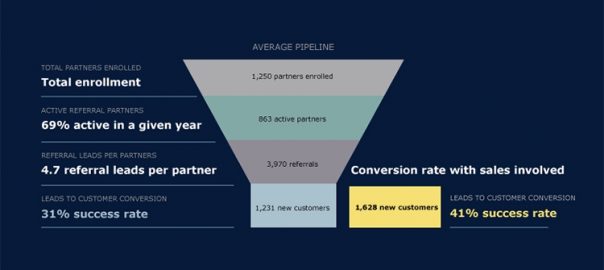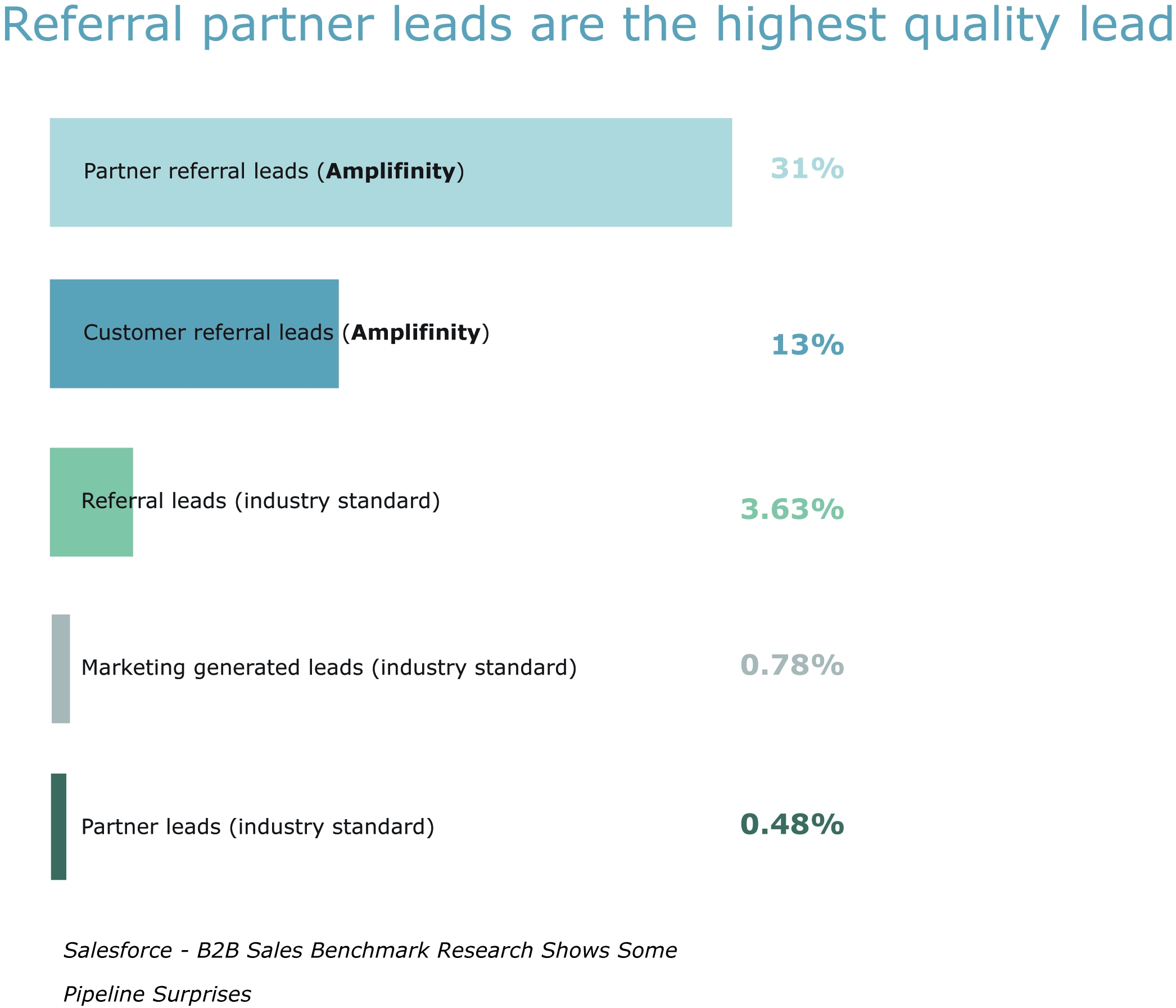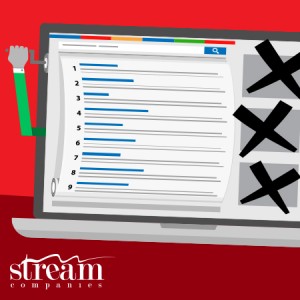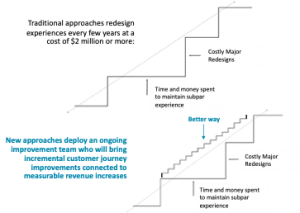— August 2, 2017
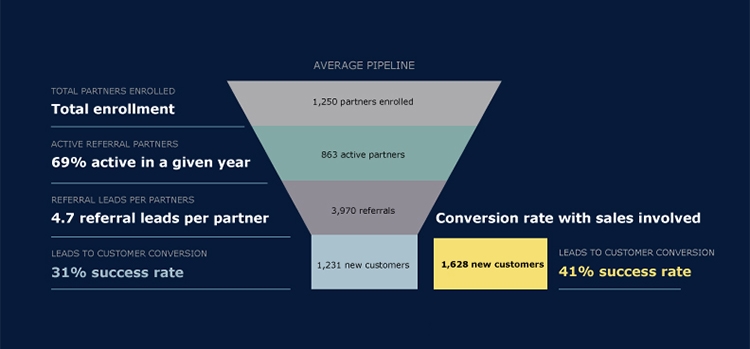
The partner landscape has been going through momentous changes due to the onset of the cloud and consequently the change in target buyer. Therefore, it has become a necessity to diversify partner relationships in order to meet growth objectives. One way companies are doing this is by establishing partner referral programs to:
- Qualify resellers as referral partners to prove productivity and fit
- Generate leads from ISVs and other individual who would never be resellers
- Get value from resellers who can’t transform to SaaS delivery models but can still be leveraged as referral partners
- Diversify partners and increase revenue generation through referrals
Based off referral partner data from actual companies’ partner referral programs during the course of a year, benchmarks were formed on:
- The average referral activity of partners
- The kind of leads coming in directly from referral partners
- How partner referrals are converting
- The impact of sales involvement on the success of partner referrals
- How rewards figure into the success of partner referrals
What is the average referral activity a company can expect from partners?
Kathy Contreras, Research Director for Channel Strategies at SiriusDecisions commented, “Partner referral programs can be used in any industry and offer a way to motivate and reward partners for identifying and registering new leads. This type of partnership [referral partners] provides the opportunity to align with organizations that have strong relationships with a supplier’s target buyers, but are not interested in or qualified to resell the supplier’s offerings (e.g. suppliers that provide collaborative solutions, systems integrators, consultants, influencers, etc).”
In the recent study done by Amplifinity based on partner referrals made on the Amplifinity platform during the course of a year, it was determined that on average 69% of referral partners are actively referring throughout the year. The average program contained 863 partners making referrals out of the average 1,250 enrolled in the partner referral program.

The remaining 31% of referral partners enrolled were not actively referring.
How high-quality are the leads that come from referral partners?
Partner referral leads are one of the highest quality partner leads. What makes partner referral leads so high-quality are their one-to-one interactions. But not all partner referral methods necessarily enable that type of interaction. Therefore, it is interesting to compare the most used partner referral methods to their success in driving deals.
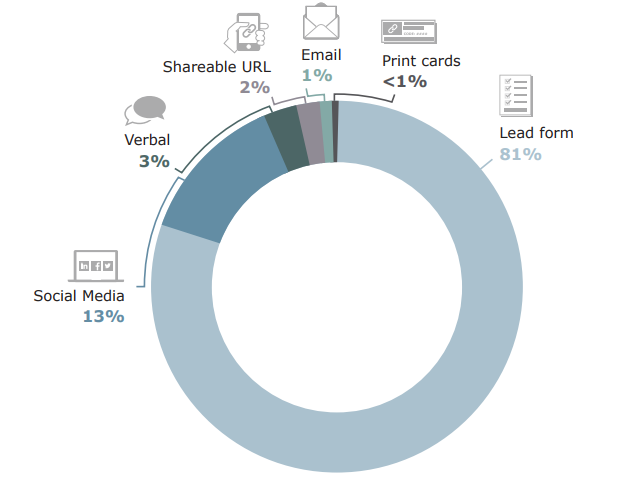
Most Popular Partner Referral Methods
As the chart illustrates, a lead form is by far the most popular way for partners to refer. This is logical since partners have a higher comfort level with lead forms as a result of it being a common business practice for partners. When looking at how lead forms converted for partners it is no surprise that it came in as the second most successful in terms of generating deals with a 37% conversion rate from partner referral lead to deal.
But if lead forms have the second highest conversion rate what is the highest?
Surprisingly, print cards have a conversion rate of partner referral lead to deal of 67%. However, this must be taken with a grain of salt since print cards were used less than 1% of the time by referral partners. This is another method that emphasizes the value of that one-to-one referral from partners.
Social media comes in as a far second in terms of popularity, with the data showing that not one partner referral coming from social media converted to a deal. This brings to the forefront the assertion that it is the one-to-one interaction that makes partner referrals such high-quality referral. While social media referrals can be done one-to-one it is more often used as a general blast.
“The data supports the concept that channel marketers already know – personalization improves conversion.” Says Trisha Winter, CMO of Amplifinity. “The same goes for referrals. Social media, which is typically used as a one-to-many referral method was the second most used, but had no success. Partner referral programs need to enable one-to-one referrals with methods like print cards, lead forms and verbal; which had high success rates.”
What impacts partner referral programs’ conversion rates?
The average success of deals coming from partner referral on the Amplifinity platform is 31%. On its own this conversion rate is remarkable, but when compared against the overall industry average created by Salesforce’s Implisit of 0.48% it almost becomes unbelievable.
However, this drastic increase in partner deal conversion didn’t surprise Winter, “It didn’t shock me that the success rate of leads created from partner referrals run on Amplifinity was so much higher than partner lead industry standards. When companies have the ability to enable partners with target buyer information while automating referral tracking, communications and incentive fulfillment it’s easy to see how referral volume and quality would sky rocket.”
Another factor that impacts the conversion rate is the fact that many partners will only bring a referral forward when a prospect has already become interested in the product or service. Attribution can additionally happen at the opportunity stage, which inherently inflates the success rate.
How does enabling sales involvement change the partner referral conversion rate?
While a 31% conversion rate is amazing by any standards, the Amplifinity report showed that enabling sales involvement in the partner referral program drove up the conversion rate even more. On average, a referral program that enabled sales to actively recruit partners to the program, generate referrals from partners, qualify referrals through partners, and receive a facilitated introduction from partners more increased the conversion rate to 41%.
What type of compensation is being offered to referral partners?
Compensation is very important when it comes to any partner program. Within the compensation structure lies the motivation for partners to make referrals. So what type of compensation is used most to motivate partners?
- 60% of programs offer checks
- 20% of partner referral programs offer gift cards
- 20% of programs offer bank transfer
The most common compensation amount paid out to referral partners was between $ 101 – $ 1,000 with 76% of partner referral programs paying between those amounts. This large variance can be due to the percentage of revenue a partner referral program pays out and the cost of the product or service the partner is referring.
Business & Finance Articles on Business 2 Community
(66)
